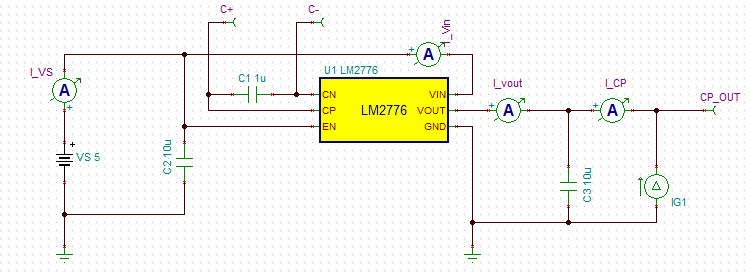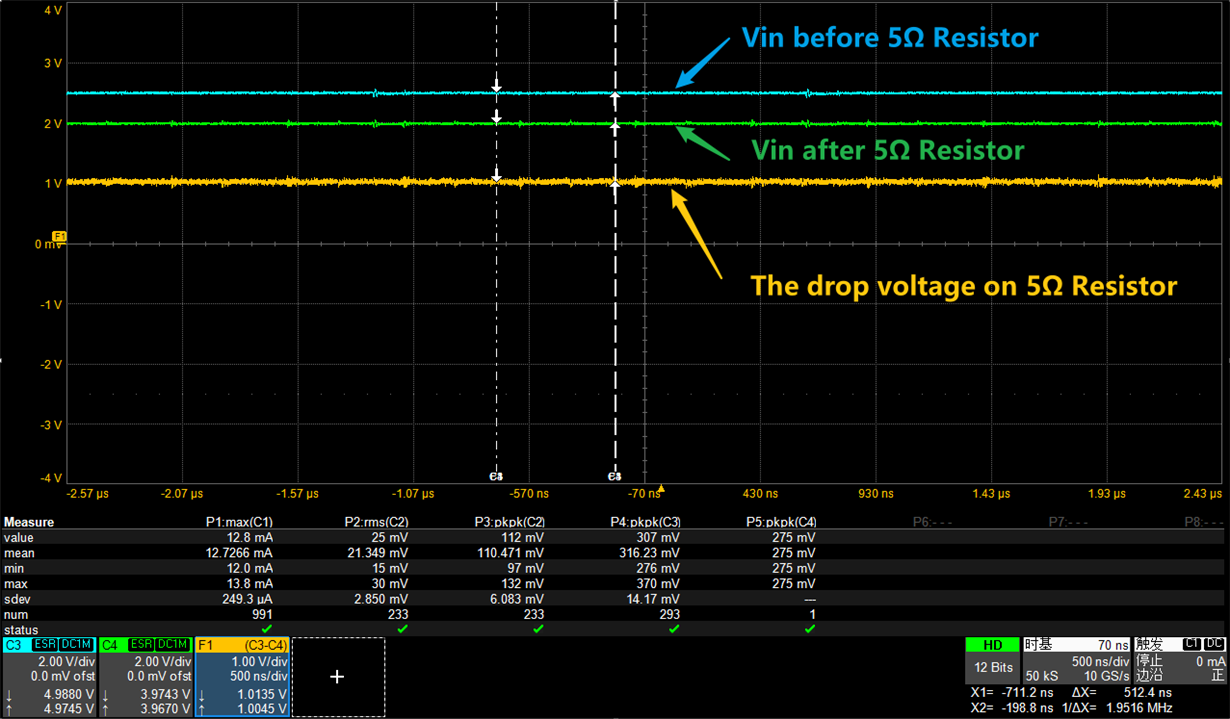Other Parts Discussed in Thread: TINA-TI
Hi team,
We found a phenomenon in the process of applying LM2776, some doubts, would like to consult:
When using LM2776 as a typical single-stage ChargePump application, through simulation, we found that the VIN current fluctuates, and the frequency is consistent with the internal 2M switching frequency of the chip, which is in line with our understanding of the function diagram in the manual;
But through actual measurement, it is found that the VIN current is stable and continuous, and does not fluctuate intermittently; the actual measurement results are inconsistent with the simulation results, which is very strange.
How to understand this phenomenon? Is there any other design influence in the chip?
The following are our simulation and test results:
[Test result] (about 200mA load, connect a 5Ω resistor before VIN, use a voltage probe to test the voltage drop, and indirectly test the current)




